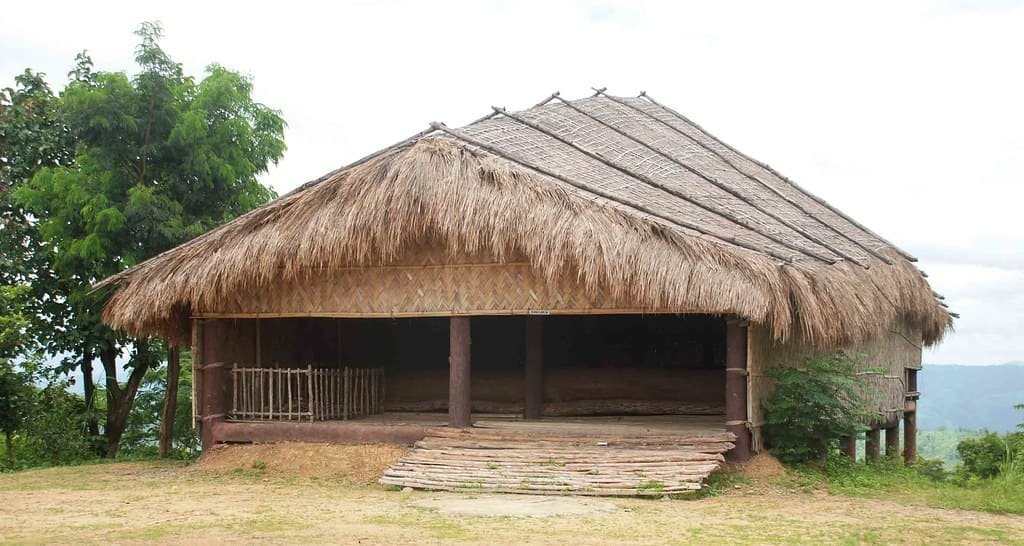Bamboo has been a popular choice of vernacular architecture around the world because of its availability, affordability and practicality. Bamboo is not just a construction material but its importance is deeply embedded in the culture, lifestyle and social practices of different communities around the world. It is considered sacred, a symbol of strength and flexibility and a gift of nature. For centuries bamboo has been adapted by different communities to develop their own unique style of traditional architecture. Here are some examples of exquisite bamboo housing around the world.
China
Earliest uses of bamboo in construction have been traced back to China. The Dai community of China extensively uses bamboo in their houses. As these are tropical areas with heavy rains, the design features a double layer to control high humidity and drain water easily. These are double storeyed houses. The upper storey is used for living and and the ground floor is used for the domestic animals and storehouses. These houses are deeply entrenched in the mythology and spirituality of these people. The main support pole of the house is considered sacred and the other poles are considered to be complementing feminine and masculine elements.

India
In India there are diverse practices of bamboo construction. It is especially a significant element in the North East part of the country. The housing practices vary with different tribes and regions. Zawlbuks are traditional dorms in Mizoram. They are centres of traditions, education and social connections in the tribe. In Assam Ikra Houses are a popular choice because of their earthquake resistance. They are built using locally available materials such as bamboo, reeds, thatch etc. Another climate responsive design in the North East are the houses on stilts, the Chang housing. They are built in rainy regions to adapt to light floods.

Ethiopia
Abundant in bamboo resources Ethiopia has unique Sidama houses. Typical Sidama houses have dome shaped roofs made of bamboo and culm sheaths for insulation. These beehive shaped houses have partitions of woven bamboo. Each partition is dedicated to different activities like cooking, livestock storage and residence. Interestingly smoked bamboos are used in construction for their preservation.

Colombia
Traditional houses in Colombia are made primarily of bamboo. They can be rectangular or circular in shape. In colder climates, the perimeter walls have small openings and are covered with a mixture of sand, cattle manure, and clay for insulation. In warmer climates, bamboo walls are more porous, and exposed poles remain uncovered. They are also highly earthquake resistant.

Philippines
Bahay Kubos are vernacular bamboo houses of the Philippines. They can be rectangular or squared.They are usually made of bamboo, palm leaves, grass etc. and are elevated on stilts.They are usually easy to repair in case of earthquakes and floods since they are made of locally available materials.

These traditional techniques are sustainable as well as reminisce of ancient knowledge and practices. They could solve the modern problems of affordable and resilient housing while also conserving traditional knowledge systems. However conscious efforts are needed to popularise and preserve these vernacular methods. Bamboo is easily available, strong and flexible, making it an ideal choice especially for earthquake and flood resistant housing. A collaborative approach between modern construction needs and local bamboo artisans will not only help in providing livelihood but will also result in improved construction techniques.
References
